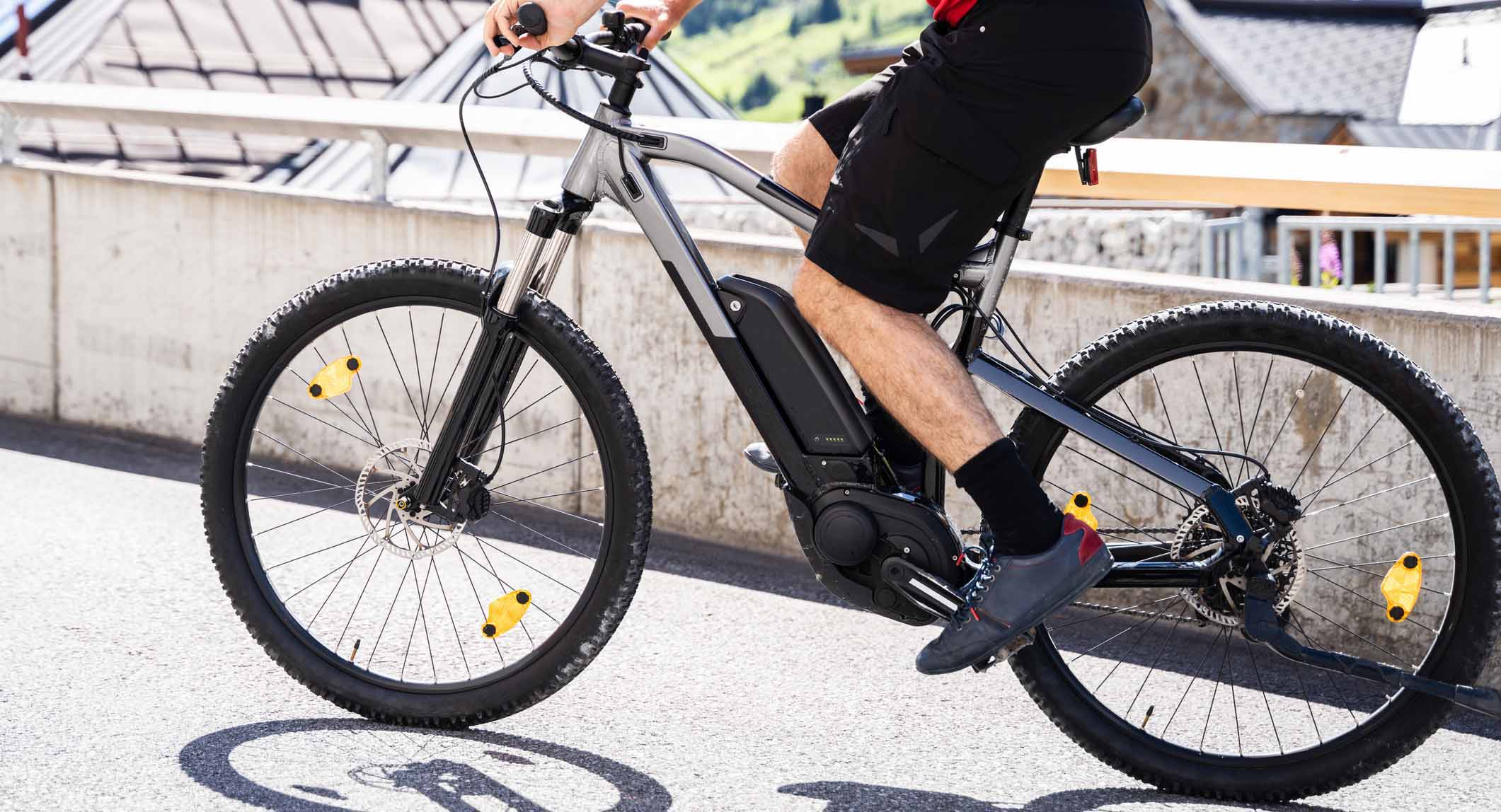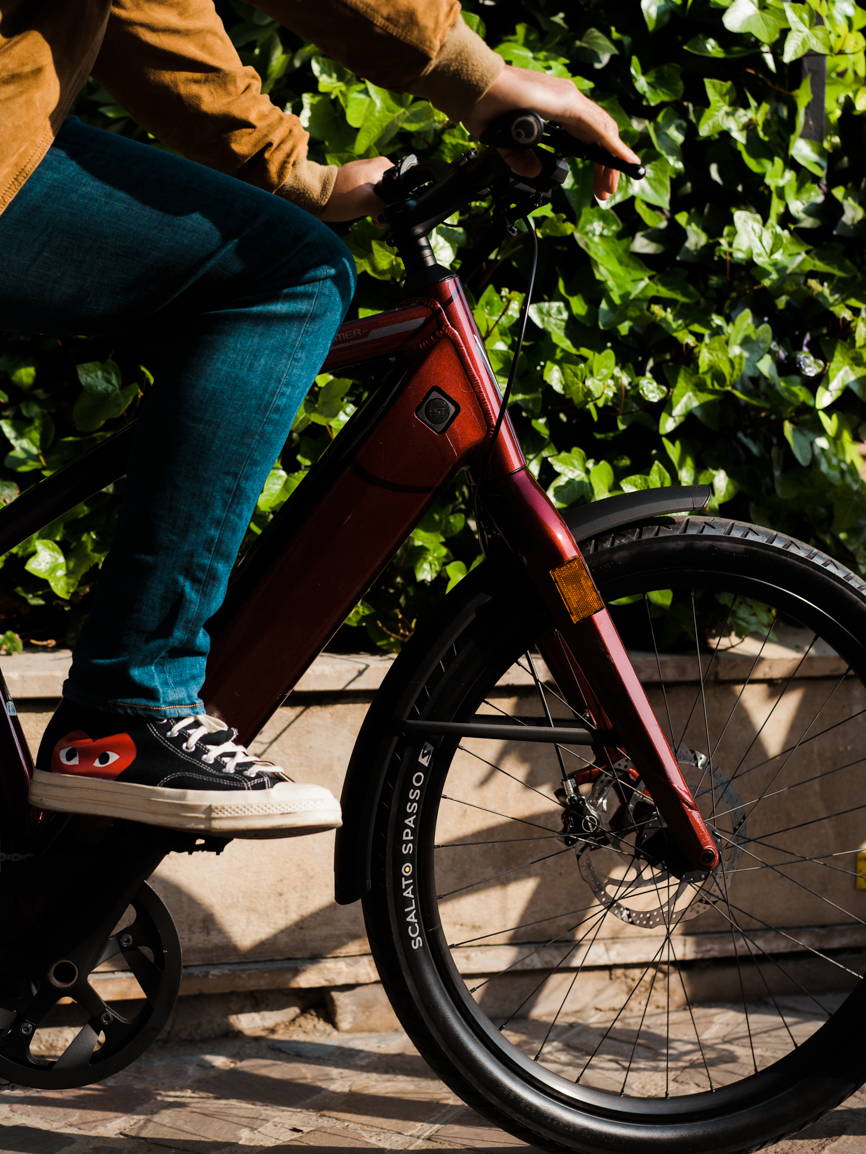Can electric bikes be recharged while riding?

You've probably already asked yourself: can my electric bike recharge itself? Can electric bikes recharge while you're riding? Or does pedaling power the battery? Let's take a look at the myths and the reality!
Well yes it is possible but not common! Generally speaking, most electric bikes do not charge when you pedal. They need their batteries to be plugged into a power outlet to be powered. However, some models offer the possibility of charging while you pedal, although this is often very inefficient.
Pedaling power is used entirely to move the bike forward, not to charge the battery. When you pedal, you are "helping" the battery, and you are both working together.
However, this does not seem totally absurd. Manufacturers are constantly developing innovative EABs with regenerative braking systems or capacitors, among other things.
Bikes that charge while riding
Most electric bicycles do not have a system for recharging the EAB while riding. This is a relatively minor market segment as the technology is still in its infancy.
Regenerative or regenerative braking
Most electric bikes that can recharge while in use operate via a concept known as regenerative braking or KERS (kinetic energy recovery system). The battery is recharged through braking. This principle has been around for about two decades, and is common on electric cars, but less so on bicycles.
How does regenerative braking work?
The details of regenerative braking can be quite complex. When you use the brakes, a brake sensor activates the motor to go into "reverse mode", which means it uses the energy generated by the brakes to charge the battery (instead of dissipating as heat, the energy is converted into electricity).
In a nutshell, regeneration captures some of the energy lost during braking and stores it in the battery. Only electric bikes equipped with direct-drive direct-drive hub motorshub motors offer this feature. This is the case with ThirtyOne's VAEs, a Toulouse-based company that has developed a hybrid bicycle, Debutwhich recharges on deceleration, whether downhill or backwards. Typically, two-wheelers offering regeneration incorporate the BionX conversion system. It is activated manually via the controller and features 4 regenerative modes, ranging from gentle slopes to very steep descents. Some estimate that the bike is fully charged after 300 kilometers, so good luck finding that much continuous downhill!
This technology is an effective form of motor braking, but does not offer a very good return on investment. It has limitations, as you can only get a small percentage of battery charge. Don't expect to recharge it to 100%!
How effective is regenerative braking on an electric bicycle?
There is no simple or exact answer to this question. Manufacturers often claim that regenerative braking will increase the range of the bike by 10-20%, but in reality it is often very difficult to achieve. Instead of paying extra for regenerative braking, you could buy a second battery, which would double the range of the bike.
Let's see what it looks like in practice:
- If you ride your electric bicycle on a flat surface for an extended period of time, in an area outside the city where there is not much traffic, you will not conserve much energy. Since you're not braking much, you won't be able to use regenerative braking as much as you'd like. You will probably only get 1% of the regenerative power.
- If you use your electric bike for your daily commute in the city, you will be able to take more advantage of this system. In traffic, you will need to slow down regularly and you may achieve a regenerative braking rate of 8 to 14%.
- If you're riding on terrain with slopes and declines, you'll need to brake regularly. You'll be able to get the most out of this technology.
Experimental designs
There are a number of experimental designs that seek to exponentially increase the efficiency of self-charging batteries. Some examples:
- The Byar Volta is a relatively new electric bike that uses the energy produced by back-pedaling to charge the battery. The manufacturer claims that the battery can recharge almost completely during use.
- The Pi-Pop is a VAE made in France, powered by a super-capacitor, a green technology that replaces the battery. Simply pressing the pedals stores energy, making itone of the few electric bikes with unlimited range. Its slogan: "the effortless electric bike".
- The Vello Bike+ is a folding model that uses KERS (kinetic energy recovery system) technology to automatically recharge the battery when descending or braking. But what makes it particularly attractive is its weight: less than 10 kg. What a feat!
These new models can be expensive, so consider this before making a purchase.
Gas pedal and pedal assist mode
Currently, there is no technology to recycle the energy produced by acceleration or pedal assist.
For now, plugging batteries into outlets seems to be the safest and most economical option for most consumers.
Conclusion
Unfortunately, at the moment, the answer to the question "can an electric bike be recharged while riding?" remains no! Even if some promising EABs are being developed like the Pi-Pop, plugging the battery into a mains socket is currently the best and least expensive solution.
FAQ on electric bikes that charge while riding
Will regenerative braking damage the brakes on my two-wheeler?
No. Regenerative braking does not damage your electric bicycle's brakes and will not wear them out further.
Why is regenerative braking so rare on electric bikes?
Most electric bikes do not use this technology because it requires a certain type of motor, called a direct drive motor. This is not the type of motor found in most electric bikes available on the market.
Direct drive motors, while having the advantage of regenerative braking, have a major disadvantage. Once the battery is depleted, not only will you have to pedal yourself, but it will be much more difficult because you will have to push against the resistance of the motor, which is not the case with an ordinary geared motor.
Not only is it more expensive, but the return on investment is not very significant. It's not worth it for the manufacturers but also for the consumers; it's unlikely that users will turn to this expensive technology that doesn't really increase the autonomy of the EVs.
Until now, manufacturers have been following the demand and not creating many EABs with this technology, but this is changing. For those who want to preserve their brakes or maximize the efficiency and autonomy of their two-wheeler, regenerative braking could be worthwhile.
